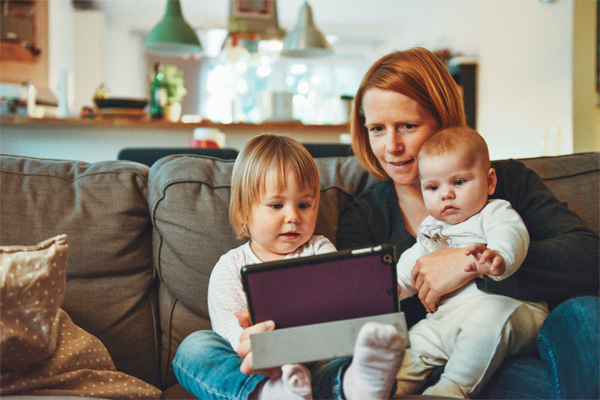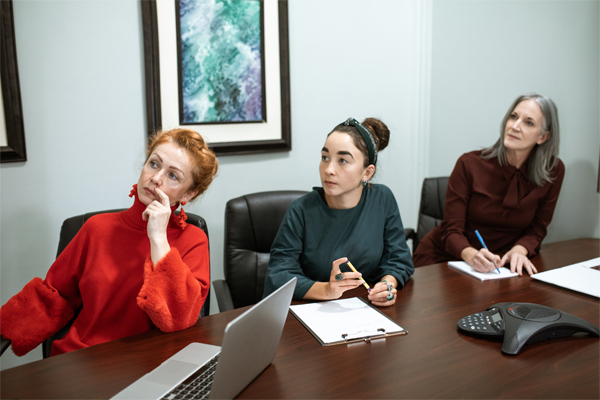New data released by the Fawcett Society has revealed that only a third of the 4,980 councillors elected in May this year were women.
At this rate of change, we won’t see gender parity in UK local councils until 2077; that’s over 50 years away, highlighted the gender equality campaigning charity. Across England women make up just 35% of the total number of councillors; less than a 1% increase since the 2019 elections.
“This was a bumper year for new councillors, but the data shows that sadly we have more of the same. Almost all councils are dominated by men. The pace of change in local government is far too slow,” stated Felicia Willow, Interim Chief Executive at Fawcett Society.
LACK OF PATERNITY/MATERNITY POLICIES
Whilst progress in improving women’s representation in local government is glacial, there are now more councils that have maternity or paternity policies in place, which Fawcett has been campaigning for. That said, around three quarters of local councils shockingly still don’t have maternity or paternity policies in place for their councillors, according to Fawcett. In fact, it’s findings revealed that:
- Only 24% of councils have a maternity or paternity policy in place for their ‘ordinary’ councillors. In 2019 just 7% had these policies in place.
- Only 25% of councils have a maternity or paternity policy in place for their senior cabinet-level councillors. In 2019 just 8% had these policies in place.

Image credit: Unsplash
In short, local councils need to get better at providing maternity and paternity policies and support to ensure becoming a councillor is more accessible for women.
KEY FINDINGS BY PARTY
Other interesting findings (by party) from the research, revealed that:
- The Conservative Party won the most seats but also has the lowest levels of women’s representation, with just 25% women councillors among those elected this year. This is a decrease of 5 percentage points from 2019, although different councils were elected that year.
- Labour has very nearly achieved equality with 49% women among their councillors elected in 2021.
- The Green Party is also close to achieving equality at 43%, however this figure remains unchanged from 2019.
- The Liberal Democrats’ performance decreased very slightly from 2019, with 33% women councillors
- The percentage of Independent women councillors increased to 31%.
KEY FINDINGS BY COUNCIL
Additional key findings (by council) showed that:
- In ascending order, the 10 worst councils for women’s representation following the May 2021 elections are: Craven (10%), West Berkshire (14%), Swale (15%), Ashfield (17%), Hambleton (18%), Cherwell (19%), Castle Point (20%), Huntingdonshire (20%), Essex County Council (20%), and Wycombe (20%). In these councils, less than one in five councillors is a woman.
- The worst councils for women’s representation across the different regions of England are: Craven, Yorkshire (10%), West Berkshire, South East (14%), Ashfield, East Midlands (17%), Huntingdonshire, East of England (20%), Tamworth, West Midlands (20%), Mid Devon, South West (24%), Cumbria, North West (27%), Havering, London (30%), and Hartlepool, North East (31%).
- 41 councils achieved, or were very close to achieving, equality, with women’s representation at 45% and over. Nottingham (55%), Cambridge (55%), Islington (55%), and Brighton and Hove (56%) had the greatest representation of women.
- Since the last local elections, Adur had the biggest increase in women’s representation, with an increase from 2019 to 2021 of 21 percentage points. Cambridge had the second biggest increase in women’s representation, with an increase of 17 percentage points.
URGENT ACTION REQUIRED
“In light of this stagnation, political parties which are failing to make progress need to urgently set out their action plans for a change of course. Councils are making some headway with policies; now we need to see action from the parties,” stated Willow.

To close the gender gap in local government sooner, the Fawcett Society is calling for:
- The Government to require parties to collect comprehensive, accurate election candidate diversity data, to enable a better understanding of how women, ethnic minorities, disabled people and LGBTQIA+ people are represented, by implementing section 106 of the Equality Act.
- The Government to make remote meetings legal for all councils in order to support women with caring responsibilities, as they were during the Covid-19 pandemic.
- Local councils to implement maternity and paternity policies by using the Local Government Association’s toolkit, to make being a councillor more accessible to women.
- Parties to set out targets for increasing women’s representation, and a clear action plan to achieve them.





































